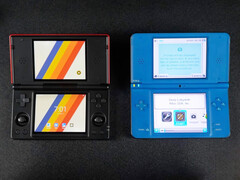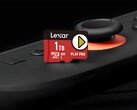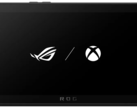Earlier this year, gaming handheld manufacturers embraced budget clamshell gaming handhelds to rival the existing Anbernic RG35XX SP (curr. $69.99 on Amazon). A few months later, Ayaneo and Ayn went to war with high-end dual-screen options called the Pocket DS and Thor, respectively. Then earlier this month, Anbernic released the RG DS as a low-cost alternative.
Positioned as a direct replication of the Nintendo DSi, the RG DS can still be pre-ordered for around $109 before applying any launch discounts. On the one hand, YouTubers like The Phawx remark that Anbernic has paid close attention to small details of the DSi like its glossy top panel, matte bottom panel and its joystick layout. With that being said, Anbernic's design decisions have given off a rather cheap impression to Adin Walls, particularly compared with the company's other recent handhelds.
The RG DS runs Android 14, which should provide compatibility with modern games through the Google Play Store. However, Anbernic does not pre-install the Play Store or Play Services. For the time being, The Phawx theorises that this is because of the RG DS' relatively weak Rockchip RK3568 chipset and 3 GB of RAM, which would struggle to keep both services in RAM while gaming.
With that being said, the RG DS is powerful enough to emulate most Nintendo DS and some 3DS games. Unfortunately, the touch sampling rate of the RG DS' displays delivers longer input latency than Nintendo's handhelds. Moreover, the inactive display drops to around 40 Hz after 30-40 seconds, leading to a desynchronisation when playing dual-screen games until you touch the inactive display. Hopefully, Anbernic can resolve the latter via a software update before the RG DS begins shipping next month.
The RG DS runs Android 14, which should provide compatibility with modern games through the Google Play Store. However, Anbernic does not pre-install the Play Store or Play Services. For the time being, The Phawx theorises that this is because of the RG DS' relatively weak Rockchip RK3568 chipset and 3 GB of RAM, which would struggle to keep both services in RAM while gaming.
With that being said, the RG DS is powerful enough to emulate most Nintendo DS and some 3DS games. Unfortunately, the touch sampling rate of the RG DS' displays delivers longer input latency than Nintendo's handhelds. Moreover, the inactive display drops to around 40 Hz after 30-40 seconds, leading to a desynchronisation when playing dual-screen games until you touch the inactive display. Hopefully, Anbernic can resolve the latter via a software update before the RG DS begins shipping next month.












